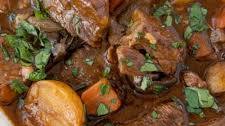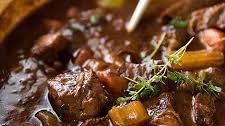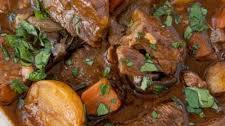As the seasons change, so do our cravings for unique and delightful culinary experiences. From the vibrant flavors of summer to the cozy comforts of winter, seasonal specials offer a tantalizing journey through nature’s bounty. These limited-time offerings not only showcase the freshest ingredients but also celebrate the spirit of each season.
When spring blossoms, restaurants embrace the vibrant colors and fresh produce that this season brings. Menus burst with crisp salads featuring tender baby greens, juicy berries, and tangy dressings. Asparagus spears are grilled to perfection, capturing that distinct earthy flavor. And let’s not forget about the delicate flavors of spring lamb, succulent and tender after a winter spent grazing on lush pastures.
Summer specials transport us to a world of sun-kissed delights. Picture yourself savoring a refreshing watermelon salad with feta cheese and mint, or biting into a juicy burger topped with grilled pineapple and smoky barbecue sauce. Seafood lovers rejoice as seaside catches take center stage: think buttery lobster rolls, perfectly seared scallops, or zesty ceviche bursting with citrus flavors.
As autumn arrives with its vibrant foliage and cool breezes, menus transform into a tapestry of warm and comforting dishes. Hearty soups brimming with seasonal vegetables like butternut squash or pumpkin become an instant favorite. Slow-cooked stews featuring tender meats and root vegetables warm both body and soul. And who can resist indulging in sweet treats like apple pie or spiced pumpkin cheesecake?
Winter ushers in a sense of coziness that is reflected in seasonal specials designed to ward off the chill outside. Imagine sipping on a velvety cup of hot chocolate topped with fluffy whipped cream or enjoying a hearty bowl of beef stew simmered to perfection. Roasted root vegetables take on new depth when paired with savory herbs and spices.
Seasonal specials not only offer an opportunity for chefs to showcase their creativity but also allow diners to embrace the ever-changing flavors of nature. By incorporating fresh, seasonal ingredients, restaurants create a connection with the land and the rhythm of the seasons. It’s a chance to celebrate the unique characteristics and tastes that each time of year brings.
So, whether you’re a food enthusiast seeking new culinary adventures or simply someone who appreciates the beauty of seasonal flavors, keep an eye out for those limited-time specials on menus. They provide an opportunity to savor the best that each season has to offer, creating memories and satisfying cravings that are as fleeting as the changing leaves or blooming flowers. Embrace the seasons through your palate, and let your taste buds embark on a delicious journey through nature’s bounty.
Frequently Asked Questions About Seasonal Specials: A Guide to Promoting, Understanding, and Leveraging Seasonal Menus and Ingredients
- How do you promote a seasonal menu?
- What is a seasonal special?
- What is a seasonal menu?
- What is the influence of seasonal products and commodities on menu content?
How do you promote a seasonal menu?
Promoting a seasonal menu is an excellent way to generate excitement, attract new customers, and keep regular patrons coming back for more. Here are some effective strategies to promote a seasonal menu:
- Highlight the unique offerings: Emphasize the distinctive dishes and ingredients that are only available during that particular season. Use descriptive language and appealing visuals in your marketing materials to showcase the flavors, colors, and textures of the seasonal menu items.
- Engage with social media: Leverage the power of social media platforms to create buzz around your seasonal menu. Share enticing photos, videos, or behind-the-scenes content featuring the preparation of these special dishes. Encourage customers to share their experiences with your seasonal offerings using dedicated hashtags.
- Collaborate with influencers: Partner with local food influencers or bloggers who have a strong following in your target audience. Invite them to try your seasonal menu and share their honest reviews on their platforms. Their endorsement can help reach a wider audience and build credibility for your offerings.
- Offer limited-time promotions: Create a sense of urgency by offering limited-time promotions or discounts on select seasonal dishes. This can entice customers to try something new while also creating a fear-of-missing-out (FOMO) effect.
- Host themed events: Organize special events centered around your seasonal menu, such as wine tastings, cooking classes, or chef-led demonstrations. These events not only showcase your culinary expertise but also provide an interactive and immersive experience for guests.
- Update website and online listings: Ensure that your website is updated with details about the seasonal menu, including mouth-watering descriptions and high-quality images of the featured dishes. Update online directories, review sites, and food delivery platforms with the latest information to attract potential customers searching for specific cuisines or seasonal specialties.
- Collaborate with local suppliers: Highlight your commitment to supporting local farmers and suppliers by featuring them prominently in your marketing efforts. Share stories and photos of the farms or producers providing the seasonal ingredients, emphasizing the freshness and sustainability of your menu.
- Email marketing campaigns: Utilize your email list to send out targeted campaigns promoting your seasonal offerings. Include enticing visuals, exclusive discounts, or even special recipes using the seasonal ingredients to pique interest and drive customers to your establishment.
- Table tents and menu inserts: Place eye-catching table tents or menu inserts within your restaurant to draw attention to the seasonal dishes. Include brief descriptions, mouth-watering images, and any unique selling points that make these items stand out.
- Collaborate with local media: Reach out to local newspapers, magazines, radio stations, or TV channels to feature your seasonal menu in their food sections or segments. Offer them a tasting experience or an interview with your chef to generate media coverage and increase visibility.
Remember that consistency is key when promoting a seasonal menu. Ensure that all marketing efforts align with the overall brand image and messaging of your establishment. By effectively promoting your seasonal offerings, you can create anticipation among customers and drive increased interest and foot traffic to experience the unique flavors of each season.
What is a seasonal special?
A seasonal special refers to a limited-time offering or menu item that is specifically created and made available during a particular season. It is designed to highlight the unique flavors, ingredients, and culinary experiences associated with that specific time of year. Seasonal specials often feature fresh, locally sourced produce and ingredients that are at their peak during that season.
Restaurants and food establishments create seasonal specials to provide customers with a unique dining experience and to showcase the best flavors of the season. These specials can range from appetizers, main courses, desserts, or even specialty drinks. They are often crafted with creativity and innovation by chefs who draw inspiration from the changing seasons.
The purpose of seasonal specials is to offer something new and exciting for customers while also reflecting the spirit and essence of the current season. By featuring dishes that capture the flavors and ingredients associated with a particular time of year, restaurants aim to provide a memorable dining experience that aligns with nature’s bounty.
Seasonal specials not only allow diners to explore different tastes but also provide an opportunity for chefs to experiment with unique combinations of ingredients and techniques. This helps keep menus fresh, interesting, and in tune with the ever-changing preferences of customers.
Overall, seasonal specials add variety and excitement to dining experiences by embracing the distinct flavors and ingredients offered by each season. Whether it’s enjoying a refreshing salad in summer or indulging in comforting stews during winter, these limited-time offerings provide an opportunity for both chefs and diners to celebrate the culinary delights that come with each passing season.
What is a seasonal menu?
A seasonal menu is a curated selection of dishes that are specifically created and offered for a limited time, typically aligned with the changing seasons throughout the year. These menus are designed to showcase the freshest and most readily available ingredients during each particular season.
The concept behind a seasonal menu is to celebrate the flavors, colors, and textures that nature offers during different times of the year. It allows chefs to work with ingredients at their peak, ensuring optimal taste and quality. By utilizing seasonal produce, proteins, and other ingredients, restaurants can create dishes that are not only delicious but also environmentally sustainable.
A well-crafted seasonal menu takes into account the unique characteristics of each season. For example, in spring, you might find dishes featuring vibrant greens like asparagus or peas, along with fresh berries and delicate herbs. Summer menus often highlight juicy fruits, garden-fresh vegetables, and light seafood options. As autumn arrives, hearty root vegetables, mushrooms, and warming spices take center stage. And in winter, you’ll find comforting soups and stews made with squashes or potatoes and heartier meats like beef or lamb.
The beauty of a seasonal menu lies in its ability to offer variety and excitement to diners. It allows them to experience new flavors and culinary creations that reflect the time of year they’re dining in. Seasonal menus also encourage support for local farmers and suppliers who provide the freshest ingredients during each season.
Restaurants may choose to change their menus quarterly or even more frequently to align with shorter seasons or regional variations in produce availability. This flexibility ensures that guests have something new to look forward to while embracing the essence of the current season.
In summary, a seasonal menu is a carefully curated selection of dishes that highlight the best ingredients available during specific times of the year. It allows chefs to showcase their creativity while providing diners with an opportunity to experience fresh flavors that capture the essence of each season.
What is the influence of seasonal products and commodities on menu content?
Seasonal products and commodities have a significant influence on menu content in the culinary world. Chefs and restaurants are increasingly embracing the use of seasonal ingredients for several reasons, including freshness, flavor, sustainability, and supporting local farmers. Here are some key ways in which seasonal products impact menu content:
- Freshness and Flavor: Seasonal ingredients are at their peak in terms of freshness and flavor. Fruits, vegetables, and herbs harvested during their natural seasons tend to be more vibrant, fragrant, and full of taste. By incorporating these ingredients into their menus, chefs can enhance the overall quality of dishes and provide customers with a memorable dining experience.
- Variety and Creativity: Each season brings a unique array of produce that chefs can utilize to introduce new flavors and textures to their menus. From juicy summer berries to earthy fall squashes or winter root vegetables, seasonal ingredients offer a diverse palette for culinary creativity. This variety keeps menus exciting and allows chefs to constantly innovate with fresh offerings.
- Sustainability: Emphasizing seasonal products promotes sustainability in the food industry. Choosing ingredients that are locally sourced and in-season reduces the need for long-distance transportation, minimizing carbon emissions associated with food miles. Additionally, it supports local farmers by creating demand for their produce, fostering a more sustainable food system.
- Cost-effectiveness: Seasonal ingredients are often more abundant during their peak seasons, leading to lower prices compared to out-of-season produce that may need to be imported or grown under controlled conditions. This cost-effectiveness allows restaurants to offer high-quality dishes at more affordable prices while maintaining profitability.
- Connection with Nature: Incorporating seasonal products on menus helps establish a deeper connection between diners and the natural world around them. It creates an awareness of the agricultural cycles and fosters appreciation for the changing flavors that each season brings.
- Menu Adaptability: Seasonal menus allow restaurants to adapt their offerings based on the availability of ingredients. By embracing seasonal products, menus can be updated regularly to reflect what is fresh and readily accessible. This flexibility ensures that customers are provided with the best possible dining experience while supporting local farmers and reducing food waste.
In summary, seasonal products and commodities play a crucial role in shaping menu content. They bring freshness, flavor, variety, sustainability, cost-effectiveness, and a connection to nature. By incorporating seasonal ingredients into their menus, chefs can create memorable dining experiences that highlight the best flavors of each season while supporting local communities and promoting a more sustainable food system.









